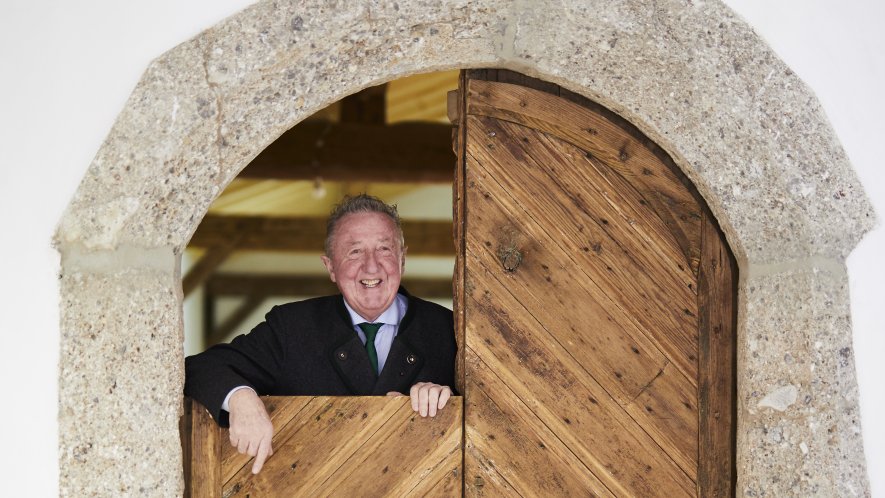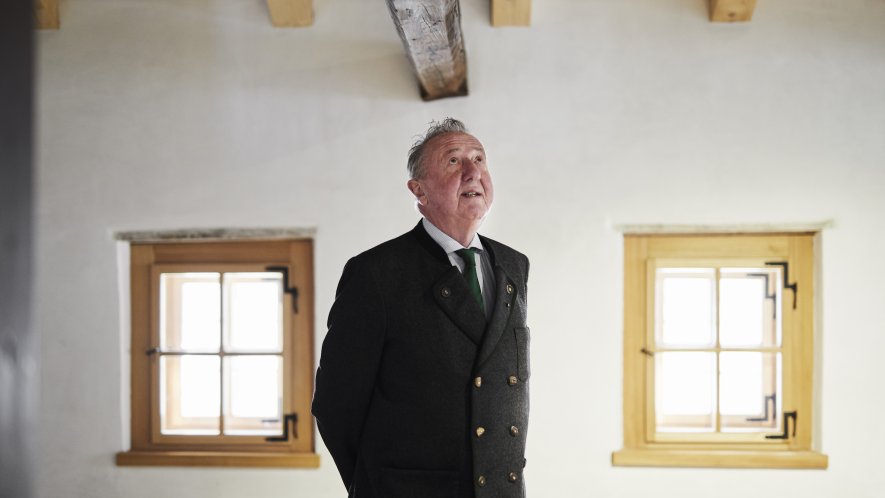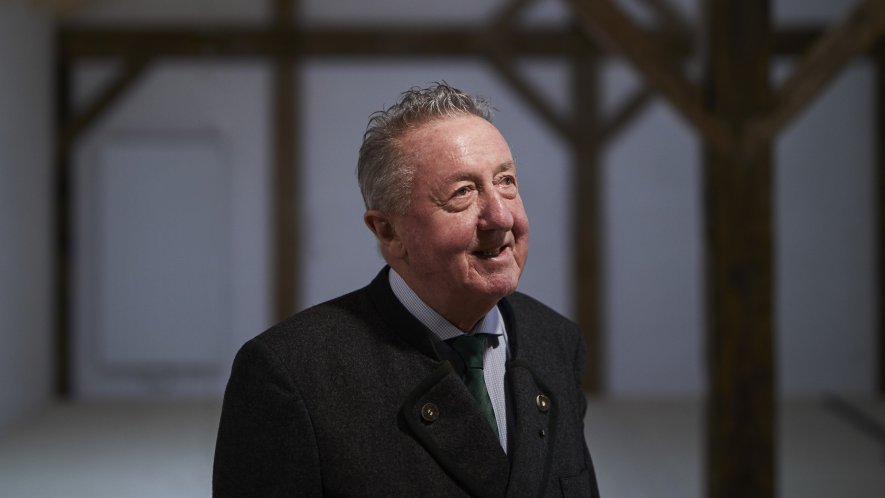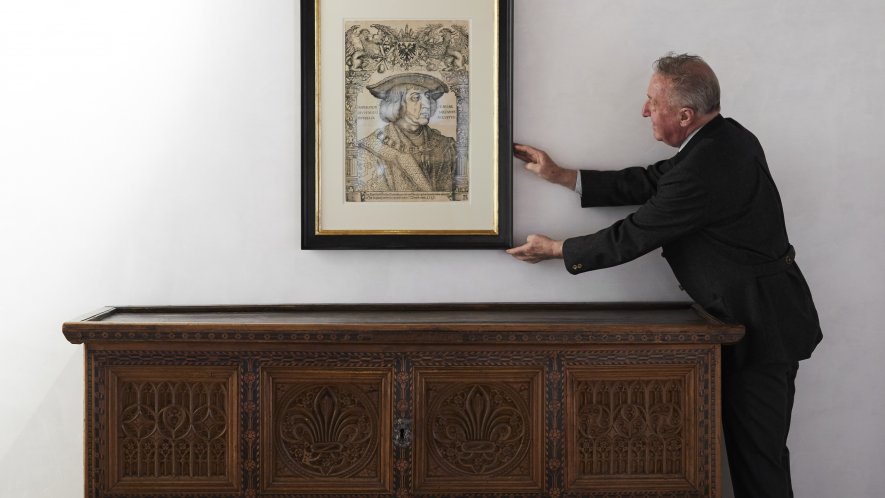Interview: From zero
For thousands of years, mining had a formative influence on the region around Leogang. About three decades ago, Hermann Mayrhofer created a monument to it in the village: in the Leogang Mining and Gothic Museum. Every day he and his team work on the further development of the museum.
From the beginning
Hermann Mayrhofer belongs to one of the oldest families in Leogang. It has been at home in this village for over 450 years. Mayrhofer himself became the head of the municipal office at a young age and thus got to know Leogang and its inhabitants very well: "My job gave me an insight into village life and into the innermost feelings of the people here." In the process, he realized that the village was in danger of losing its own identity. The 1960s and 1970s in Leogang were marked by the burgeoning tourism industry, which brought an economic boom to the region. "Especially when winter tourism development succeeded in 1970 it made itself very strongly felt," explains Hermann Mayrhofer. From then on, a large part of the people were busy providing enough overnight accommodations for the arriving tourists. There was very little time left for the history and traditions of the region.
Raising awareness
For Hermann Mayrhofer, however, it was precisely these that played an important role in his life. "I think I got that from my parents' house and my teachers at school - this understanding of the importance of one's own history." In his role as municipal office manager, he had small monuments restored and tried to create awareness among people about special stories in everyday village life. "Whether it was the imperial linden tree or the miners' chapel of St. Anna and its unique altar, I showed people that there are stories hidden behind them that concern us and our village," Mayrhofer recounts. It was precisely this altar - with its profane depictions of mining and images of the patron saints - that was also to be the impetus for the Leogang Mining and Gothic Museum. "This actually gave rise to the idea of specializing in mining and Gothic in a museum."
Rather unusual
So the museum in Leogang is not a mining museum as you know it from other places. One looks in vain for pit lamps and iron picks. There is a mineral collection, but it is not the central piece of the house. "The Middle Ages were the heyday of mining in Leogang, and the Gothic period was the predominant art movement at the time. So it was quite clear for us to exhibit not only mining but also the art of the area that resulted from it," says Mayrhofer, explaining the quite natural link between the two components of the museum, which perhaps is not immediately understood by everyone. People's understanding has been lacking on the whole a time or two. Before the museum opened in 1992, Mayrhofer worked to establish a show mine in Schwarzleo. "At the time, people said, 'What do they want to go down the hole for now?" laughs Hermann Mayrhofer. However, skepticism gave way quite quickly to a certain curiosity and the show mine became a complete success, not only among the local population.
Museum without an exhibit
Some people were similarly skeptical when Mayrhofer embarked on the Mining and Gothic Museum project without a single exhibit. "When I think about it now, we were a bit crazy." Despite all of this craziness, or perhaps because of it, the museum opened in 1992. The few exhibits were displayed in a very orderly fashion and each room was given its own focus. International critics were enthusiastic and more and more visitors and visitors came. "If you do something average, no one will be for it and no one will be against it," Mayrhofer is convinced - and pleased that he has never been deterred. When more than 20,000 people came to the exhibition "Mary - Light in the Middle Ages" in 2003, it became obvious that the museum had become too small. In the following years it was enlarged by 250 m² underground. In the meantime, it consists of two interconnected houses and a show smithy. There are collaborations with the Cultural Forum Prague, permanent loans from the Leopold Collection and exhibits from the Louvre. "From the very beginning, we focused on high quality and made some very expensive purchases for which I had to go begging for a long time, but which paid off in the long run," says Mayrhofer, convinced that he had chosen the right path.
Future with history
How this path can look like for the Mining and Gothic Museum in the future is very clear for Hermann Mayrhofer. A list of more than 15 titles for future exhibitions is in his office. Some of them are already being worked on concretely. He would also like to get young people more involved so that the history of mining in Leogang and the identity of the town are preserved in the decades to come. Because: "I have always lived in Leogang, but I am a cosmopolitan European and have traveled a lot. For me, the attachment to one's own homeland is not an expression of any nationalism, but a condition for understanding the global context in our modern world."
Pictures: Bergbau- und Gotikmuseum Leogang, Sophie Kirchner






